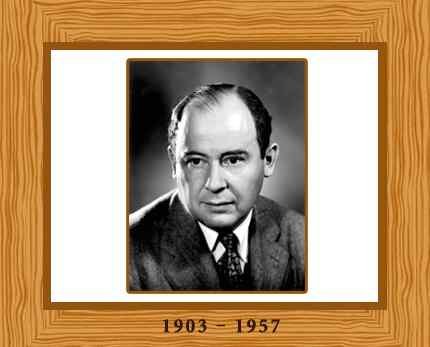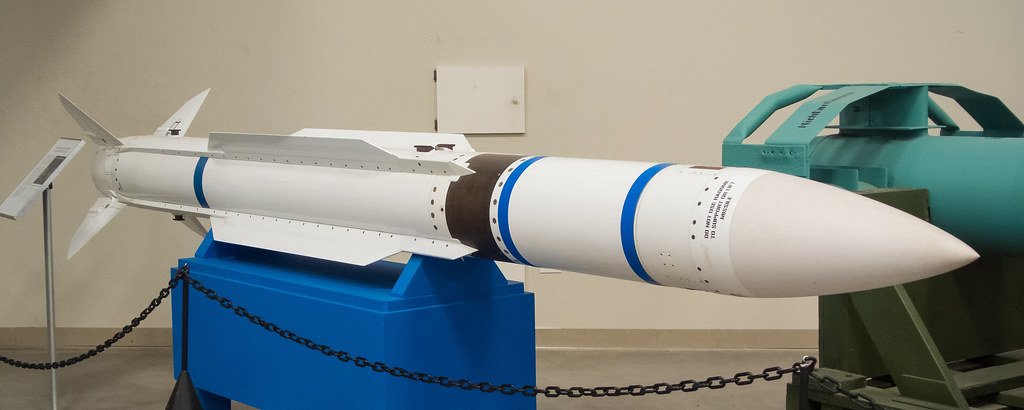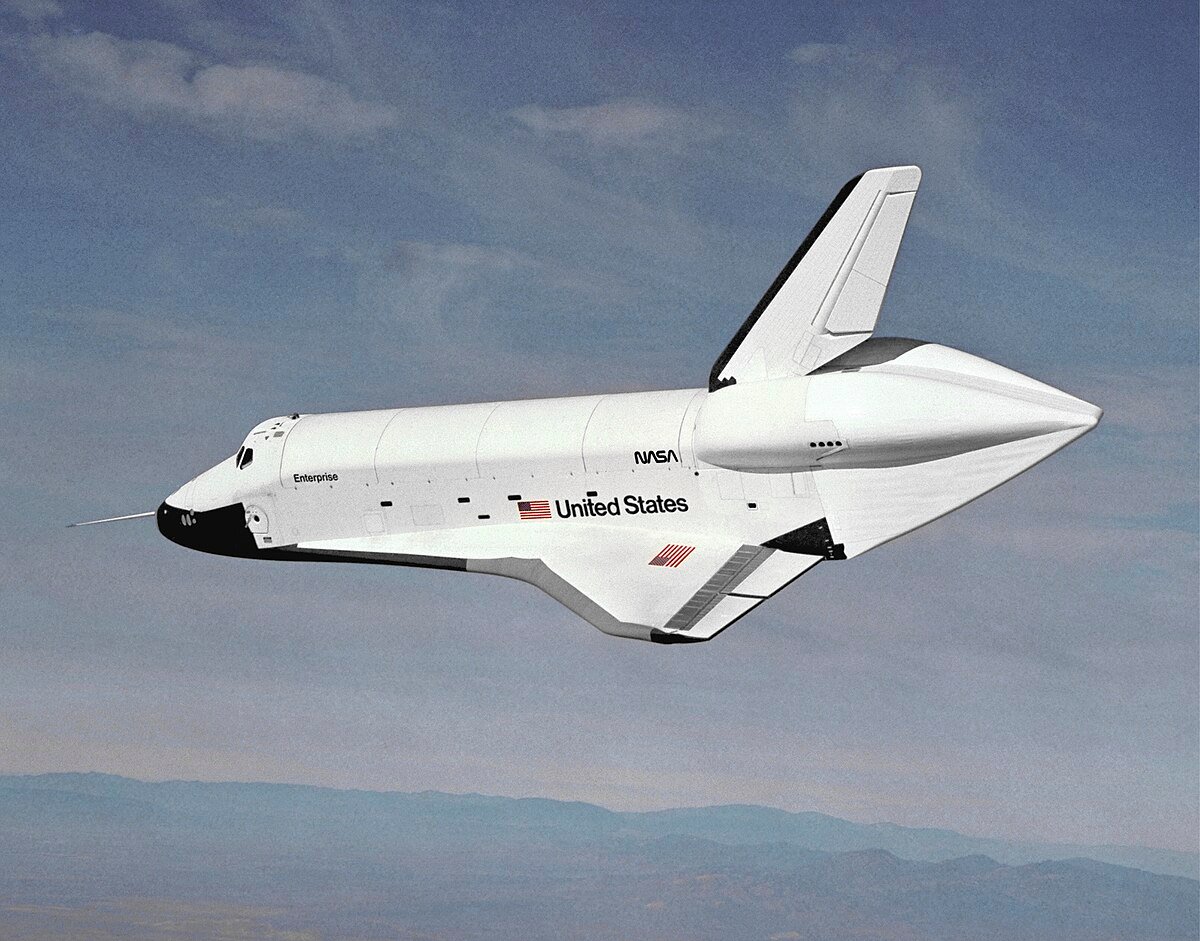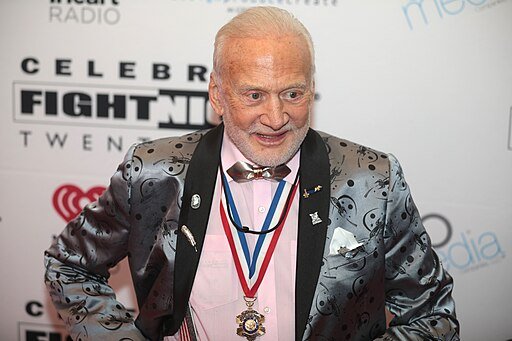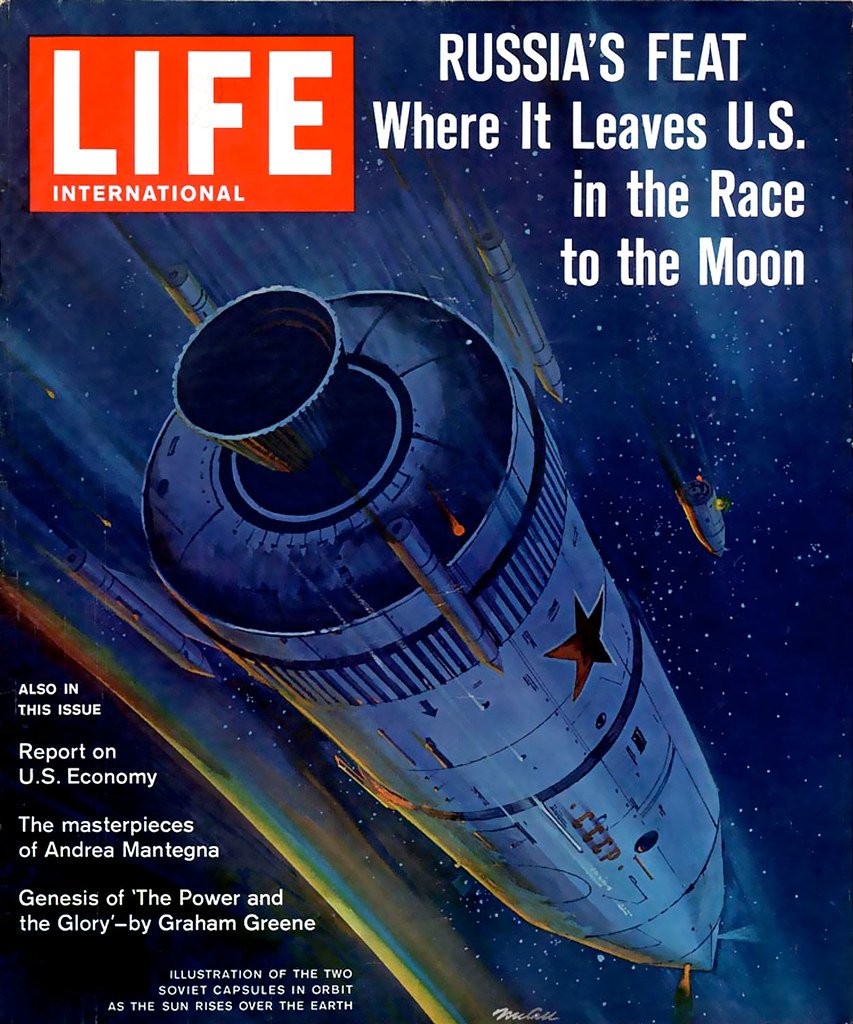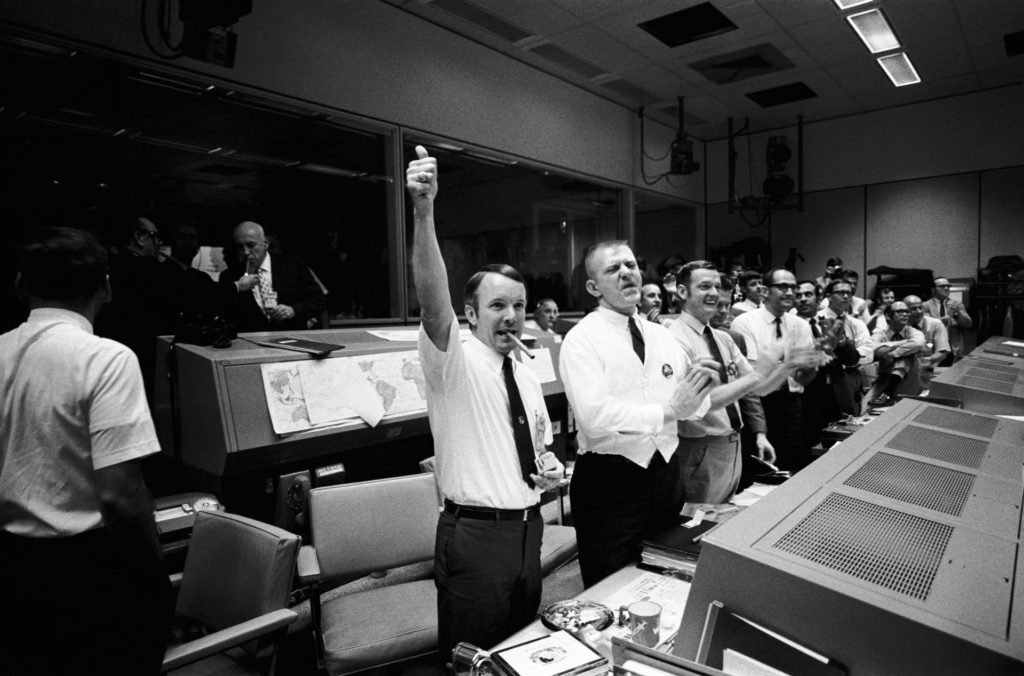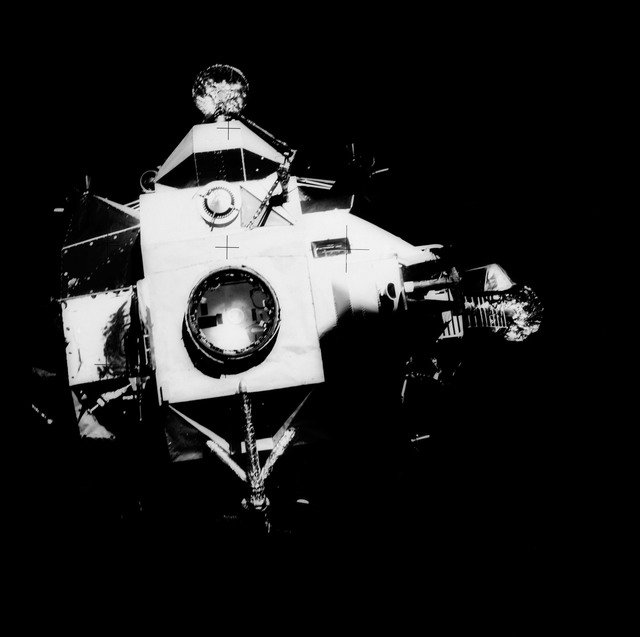In the annals of human history, one event stands as an unparalleled testament to our capacity for exploration and ambition: the moment a man sets foot on the Moon. The phrase “Man on the Moon” resonates through time, conjuring images of lunar landscapes, astronauts in their iconic spacesuits, and the iconic words uttered by Neil Armstrong as he took that “one small step.” Yet, the story of this historic achievement encompasses more than just Armstrong’s first step. It’s also about the incredible journey of Buzz Aldrin, an astronaut whose name has become synonymous with space exploration.
Buzz Aldrin, whose real name is Edwin Eugene Aldrin Jr., played an integral role in the Apollo 11 mission, forever etching his name into the annals of space history. While Neil Armstrong’s name is most often associated with the first human landing on the Moon, Buzz Aldrin’s role as the second man to walk on the lunar surface is equally significant.
This blog post is dedicated to delving deep into the life and accomplishments of Buzz Aldrin, shedding light on the man behind the helmet, and exploring the immense contributions he made to space exploration. From his early years and military service to his pivotal role in the Apollo 11 mission, Buzz Aldrin’s journey is a captivating narrative that unveils the triumph of human achievement and highlights the unquenchable thirst for knowledge that fuels space exploration. Join us as we embark on an odyssey through the life and legacy of Buzz Aldrin, the man who took a giant leap for humanity on that fateful day when he walked on the Moon.
Table of Contents
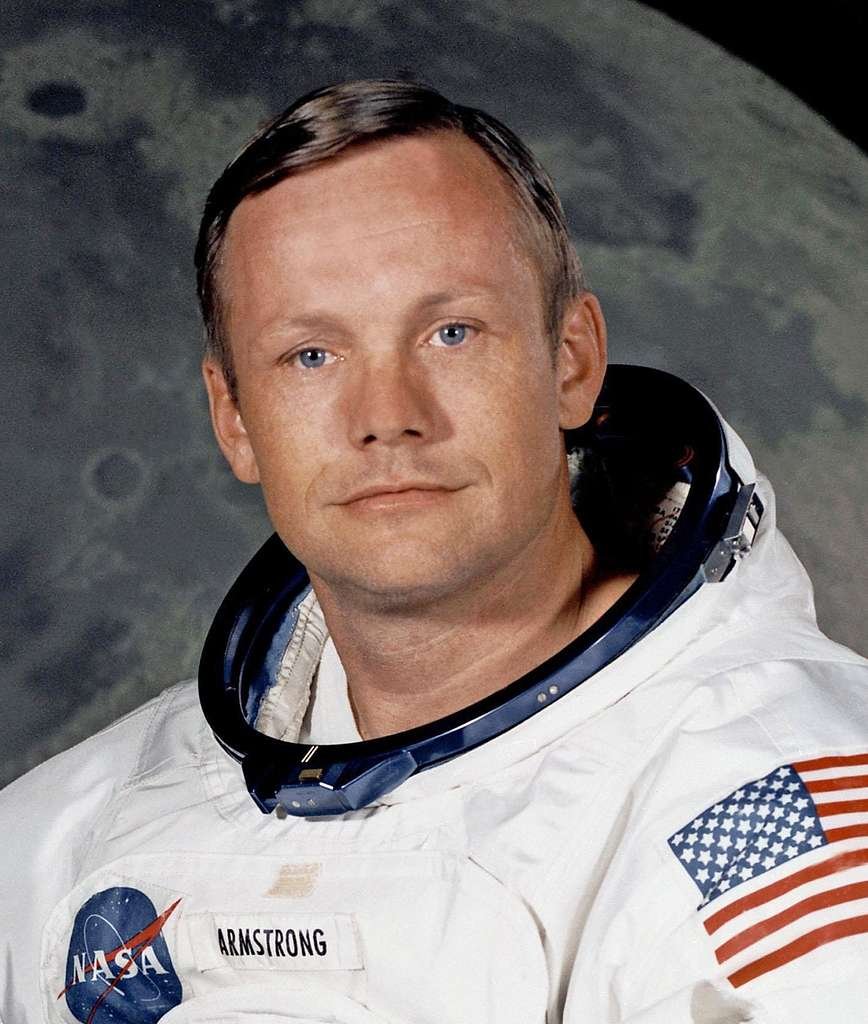
Who was the first man on the Moon?
The first man on the Moon was Neil Armstrong. On July 20, 1969, during NASA’s Apollo 11 mission, Neil Armstrong became the first human to set foot on the lunar surface. As the mission commander, he descended from the lunar module and famously uttered the historic words, “That’s one small step for man, one giant leap for mankind,” as he took his first step onto the Moon’s surface. This monumental achievement marked a pivotal moment in human history, signifying the successful culmination of years of dedication, scientific advancement, and determination to explore space beyond Earth.
Neil Armstrong’s historic Moonwalk, alongside Buzz Aldrin, who followed him shortly after that, captivated the world’s attention and symbolized the limitless potential of human exploration. Armstrong’s remarkable feat and his contributions to space exploration inspire future generations to reach for the stars and expand our understanding of the cosmos.
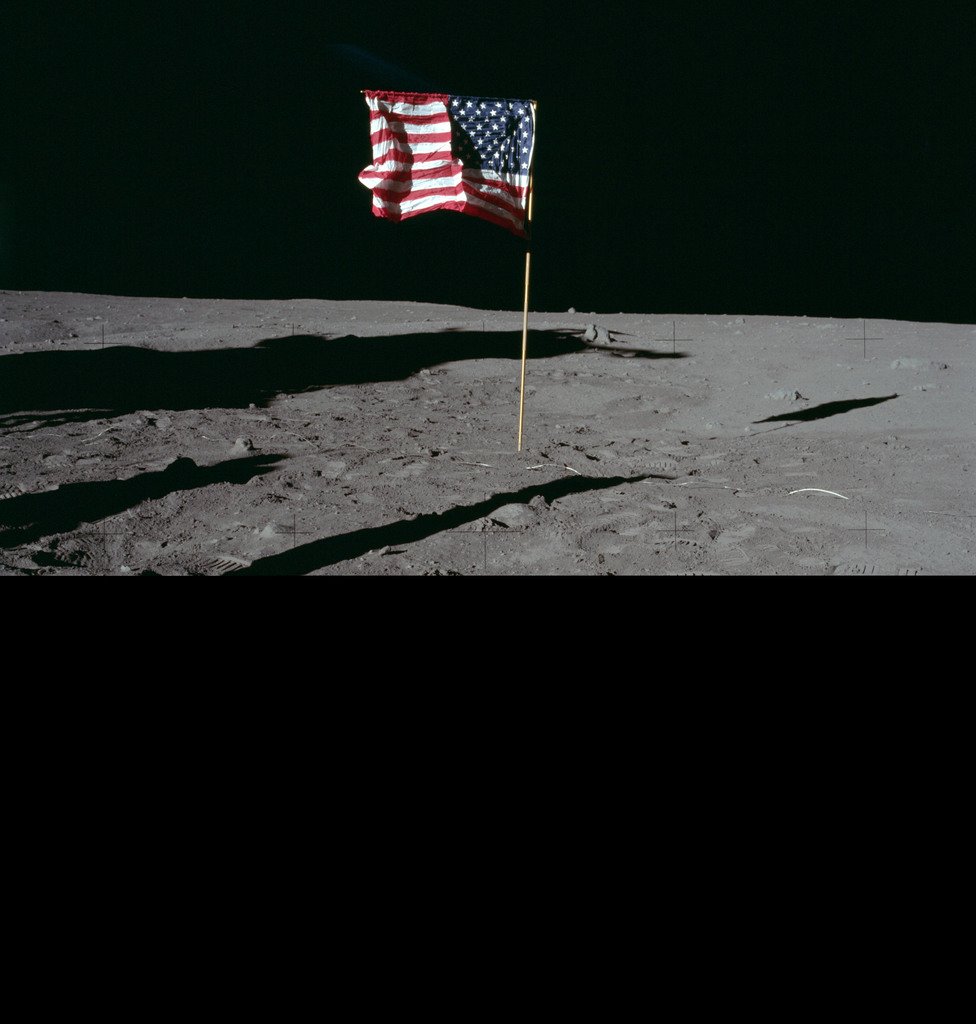
Is the flag still on the moon?
Yes, the American flag planted on the Moon during the Apollo missions remains there. The Apollo 11, 12, 14, 15, and 16 missions produced the flags on the lunar surface. These flags were made of unique materials to withstand the harsh lunar environment, including extreme temperatures, vacuum, and radiation.
However, it’s important to note that over time, the flags have likely been bleached and weathered by the intense ultraviolet radiation from the Sun. The lunar surface experiences extreme temperature variations between day and night, which can also affect the condition of the flags. Additionally, micrometeoroid impacts and the absence of an atmosphere mean no protection from space debris.
As a result, the flags have probably faded and deteriorated since they were first planted, but they are still on the Moon. To definitively confirm their condition, future lunar missions equipped with high-resolution cameras may provide more detailed images of these historic symbols of human achievement.
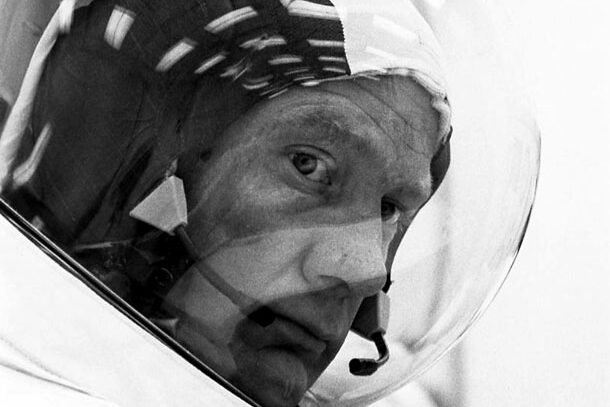
Buzz Aldrin: The Second Man on the Moon
The Apollo 11 mission, a monumental achievement in the annals of human exploration, unfolded on July 20, 1969, forever etching its significance into the tapestry of history. Neil Armstrong’s iconic words, “That’s one small step for man, one giant leap for mankind,” echoed across the globe as he made his historic descent onto the lunar surface. These words encapsulated the dreams and aspirations of an entire species, marking a pivotal moment in our journey beyond Earth.
Yet, amid the spotlight that inevitably shone on Armstrong’s groundbreaking words and the first footprint on the Moon, it’s easy to overlook the incredible odyssey of Buzz Aldrin, the second astronaut to set foot on our celestial neighbor. While Armstrong’s step was the first, Aldrin’s journey was equally remarkable, if not more so. His presence on the Moon alongside Armstrong represented a triumph of human courage, science, and exploration.
This blog post aims to pay homage to the unsung hero of Apollo 11, Edwin Eugene “Buzz” Aldrin. We’ll dive into the depths of his life story, from his early years and military service to his illustrious career as an astronaut. Beyond being the second man on the Moon, Buzz Aldrin’s legacy extends into space exploration, where he contributed significantly to our understanding of the cosmos. Join us as we unravel this true space pioneer’s extraordinary life and achievements.
Early Life and Education
Buzz Aldrin, born on January 20, 1930, in Montclair, New Jersey, USA, was destined for greatness from an early age. His fascination with aviation and space exploration was kindled by his father, who served in the military and actively nurtured young Buzz’s curiosity. This early exposure to the wonders of the skies set him on a trajectory toward the stars.
Aldrin’s educational journey was marked by remarkable dedication and excellence. He attended the prestigious United States Military Academy at West Point, where he honed his discipline, leadership skills, and passion for aerospace. Graduating as the third-ranking cadet in his class in 1951, Aldrin’s academic prowess and determination laid a solid foundation for his future career as an astronaut.
These formative years instilled in Buzz Aldrin a deep sense of duty and commitment and provided the knowledge and skills that would prove invaluable during his pioneering endeavors in space exploration. His educational achievements were just the beginning of a remarkable journey that would eventually lead him to become one of the most iconic figures in human history, forever associated with the monumental achievement of walking on the Moon.

Military Career
After graduating with distinction from West Point, Buzz Aldrin embarked on a remarkable journey in the United States Air Force, where his passion for aviation and dedication to service soared to new heights. His military career, notably during the Korean War, demonstrated his unwavering commitment to his country.
During the Korean War, Aldrin served as a fighter pilot, a role that demanded extraordinary skill and courage. He piloted an F-86 Sabrejet and completed an impressive tally of 66 combat missions. These missions were dangerous, as dogfights and close encounters with enemy aircraft were a grim reality. Despite the problematic nature of his missions, Aldrin’s determination and proficiency as a pilot shone through.
Aldrin’s exceptional performance in the face of adversity did not go unnoticed. His courage and dedication earned him the prestigious Distinguished Flying Cross, a testament to his remarkable contributions and bravery in the theater of war.
This early chapter in Buzz Aldrin’s life solidified his reputation as a skilled aviator. It honed the resilience and discipline that would later prove invaluable in his historic journey to the Moon as part of the Apollo 11 mission. His experiences in the United States Air Force were a crucible that shaped the indomitable spirit of a man destined to make history in space exploration.
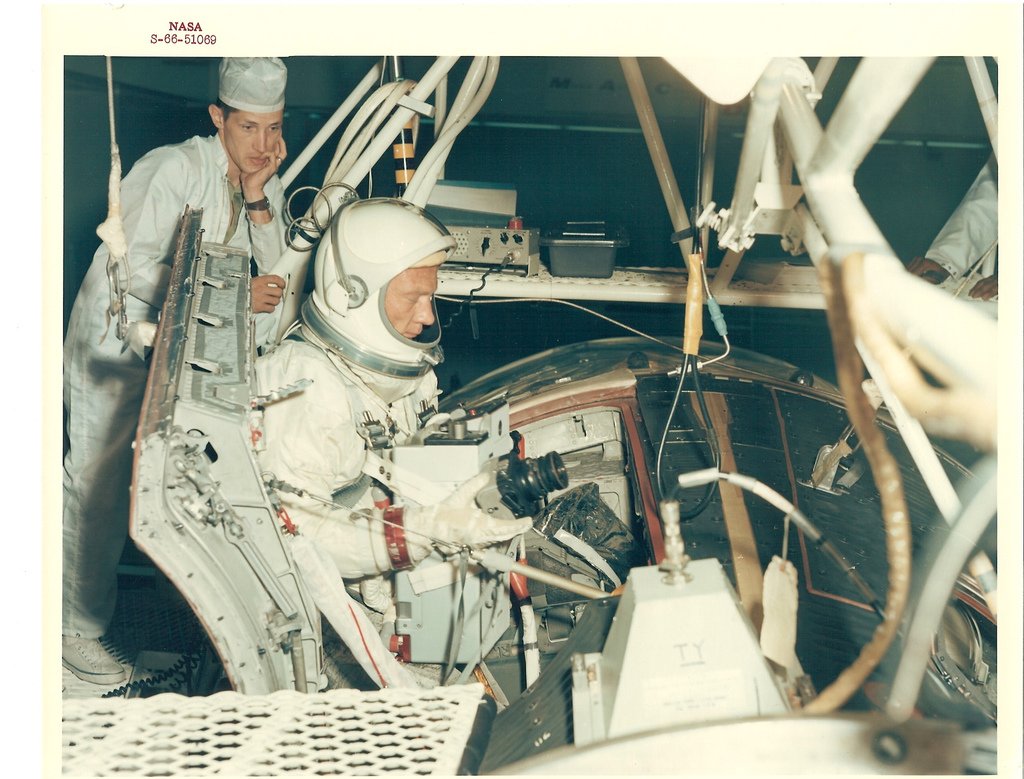
Transition to NASA
In 1963, Buzz Aldrin achieved a significant milestone in his journey towards becoming an astronaut when he earned a Doctor of Science in Astronautics from the prestigious Massachusetts Institute of Technology (MIT). This academic accomplishment demonstrated his exceptional intellect and his unwavering commitment to advancing the field of space exploration.
Aldrin’s degree from MIT was pivotal in his career, propelling him into the ranks of NASA’s astronaut corps. In the same year, 1963, he was selected as part of NASA’s third group of astronauts, a cohort specifically chosen to participate in the groundbreaking Gemini and Apollo programs. This selection was a testament to Aldrin’s exceptional qualifications, both academically and professionally, as well as his dedication to the pursuit of space exploration.
His role in these programs would ultimately lead him to the historic Apollo 11 mission, where he, along with Neil Armstrong and Michael Collins, would make history by becoming one of the first humans to journey to the Moon, solidifying his place as an iconic figure in the annals of space exploration.
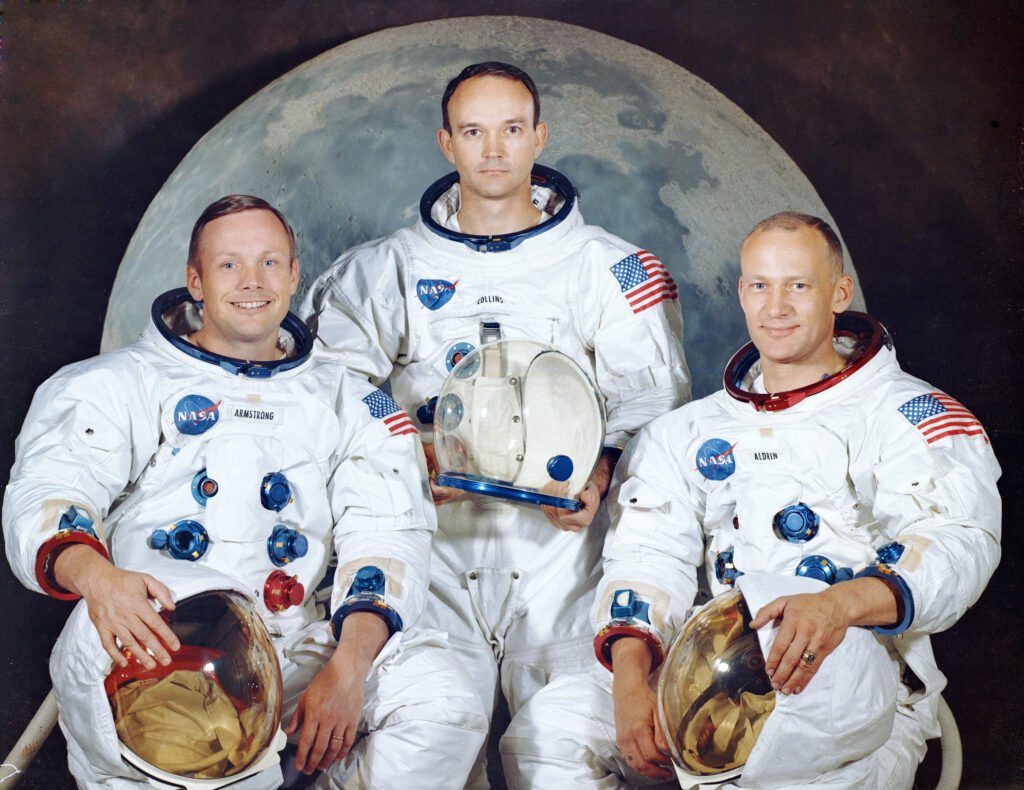
Apollo 11 Mission
The Apollo 11 mission, culminating in meticulous planning and rigorous training, featured a remarkable trio of astronauts: Neil Armstrong, the mission commander; Buzz Aldrin, the lunar module pilot; and Michael Collins, the command module pilot. Their journey to the Moon represented the pinnacle of human exploration.
On that momentous day, July 20, 1969, as the lunar module, named Eagle, descended to the lunar surface, the world held its breath. Tethered to the spacecraft, Buzz Aldrin and Neil Armstrong ventured into the unknown. With a collective sense of anticipation, people across the globe watched and listened as Aldrin’s famous words echoed back to Earth: “Beautiful view. Magnificent desolation.”
As Aldrin and Armstrong stepped onto the Moon’s surface, they embarked on an extraordinary mission. Their time on the lunar terrain was filled with scientific experiments, sample collections, and the deployment of instruments to further our understanding of Earth’s celestial neighbor. The data they gathered would significantly contribute to our knowledge of the Moon’s geology and history, leaving an indelible mark on space exploration.
Contributions to Science
Buzz Aldrin’s contributions to space exploration extended far beyond his historic Moonwalk. His pioneering work in developing lunar rendezvous and docking techniques during the Gemini program laid the crucial groundwork for the success of the Apollo missions. These techniques involved the precise maneuvers needed to rendezvous and dock two spacecraft in orbit, a vital skill required for docking the lunar module with the command module during the Apollo missions.
Moreover, while on the lunar surface during the Apollo 11 mission, Buzz Aldrin conducted a series of critical observations and experiments that significantly advanced our understanding of the Moon’s geology and environment. He collected rock and soil samples, set up scientific instruments, and conducted experiments related to seismic activity and lunar soil mechanics. These endeavors provided invaluable data that contributed to the Apollo program’s overall success and enriched our knowledge of our celestial neighbor, the Moon, and continue to inform future lunar exploration missions. Buzz Aldrin’s meticulous work exemplified his commitment to advancing scientific understanding and further solidified his legacy as a critical figure in the history of space exploration.
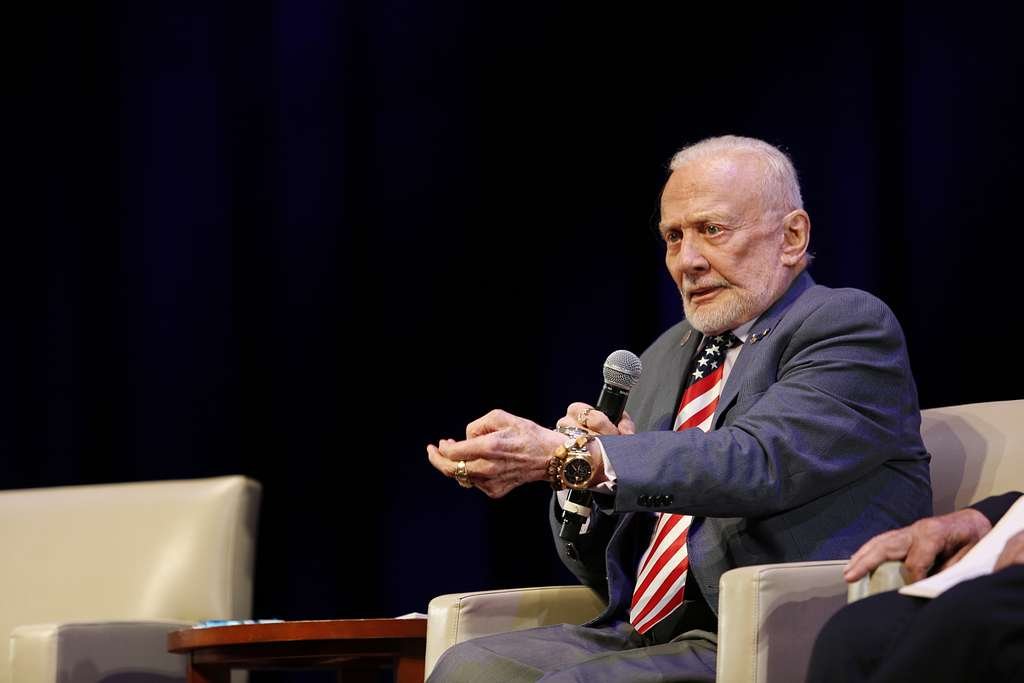
Post-Apollo 11 Career
After his illustrious career at NASA, Buzz Aldrin’s passion for space exploration remained undiminished. In the years following his historic journey to the Moon, he dedicated himself to advocating for the future of space exploration, particularly missions to Mars. Aldrin understood that the human thirst for discovery should extend far beyond the lunar surface, and he tirelessly campaigned for ambitious ventures that would take humanity more profoundly into the cosmos.
Among his remarkable contributions to space literature was the authorship of several books. Notable among them are “Return to Earth” and “Magnificent Desolation,” where Aldrin shared his personal experiences, challenges, and profound insights gleaned from his time in space. These books provided readers with a unique perspective on the trials and triumphs of an astronaut and ignited a sense of wonder and curiosity about the universe.
Even today, Buzz Aldrin remains a prominent and revered figure in the space community. His unwavering commitment to pushing the boundaries of human exploration beyond Earth’s orbit inspires aspiring astronauts, scientists, and space enthusiasts worldwide. His legacy remains a guiding star, encouraging humanity to reach for the stars and embark on the next great adventure in space.
Legacy
Buzz Aldrin’s legacy extends far beyond his historic Moonwalk. His unwavering commitment to pursuing scientific knowledge, exploring the cosmos, and advancing human potential has left an indelible mark on the world.
As a pioneering astronaut, Aldrin’s achievements continue to serve as a source of inspiration for generations of space explorers. His footsteps on the lunar surface symbolize the pinnacle of human achievement, symbolizing what can be accomplished through determination, innovation, and teamwork.
Beyond his iconic moment on the Moon, Buzz Aldrin’s relentless advocacy for space exploration has fueled dreams of venturing further into the cosmos. His vision for a future where humans journey to Mars and beyond has sparked discussions and initiatives within the scientific community, reigniting the collective passion for exploring the unknown.
In an ever-changing world, Buzz Aldrin remains a beacon of hope and aspiration, reminding us that our reach is limited only by our imagination and determination. He is a testament to the enduring spirit of exploration that compels humanity to strive for the stars, to push boundaries, and to expand the horizons of our knowledge and understanding of the universe. Buzz Aldrin’s legacy will forever be a guiding star in the night sky of human exploration, illuminating the path for future generations to follow.
Buzz Aldrin’s journey from a young boy passionate about the skies to becoming the second man to set foot on the Moon is a testament to human perseverance and the spirit of exploration.
His contributions to space exploration and his ongoing advocacy for the future of space travel ensure that his name will forever be associated with the history of space exploration. As we look to the end and the possibility of humans setting foot on Mars and beyond, we can draw inspiration from the remarkable life and achievements of Buzz Aldrin, a true pioneer in space exploration.


